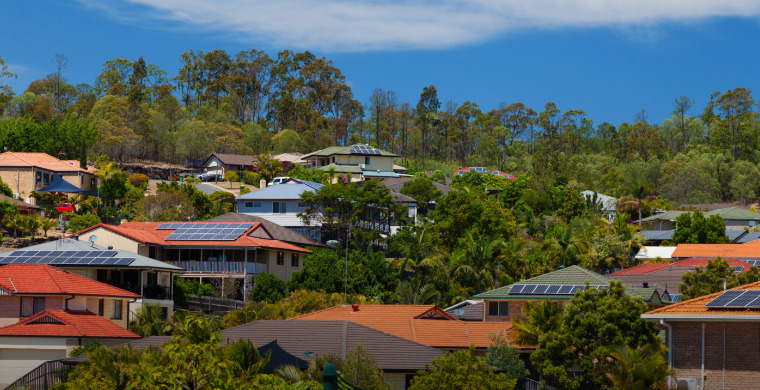
Non-profit organisation Climate Council has signalled that Australia, the global leader in rooftop solar PV installations, could add a further 26.4GW by the end of the decade, bringing its total to 49.4GW.
The organisation’s Seize the Sun report, released yesterday (19 September), states that the installed capacity of rooftop solar PV is anticipated to overtake that of coal-fired generation by the end of the year.
Unlock unlimited access for 12 whole months of distinctive global analysis
Photovoltaics International is now included.
- Regular insight and analysis of the industry’s biggest developments
- In-depth interviews with the industry’s leading figures
- Unlimited digital access to the PV Tech Power journal catalogue
- Unlimited digital access to the Photovoltaics International journal catalogue
- Access to more than 1,000 technical papers
- Discounts on Solar Media’s portfolio of events, in-person and virtual
Australia currently has around 3.6 million households with rooftop solar PV installed, granting households an average annual savings of around AU$1,500 (US$1,021). Collectively, this means Australian households are saving around AU$3 billion per year.
Pivotal in scaling up rooftop solar PV’s installed capacity is driving uptake among more family homes, social housing and businesses. Worryingly, however, the Climate Council’s report indicates that two-thirds of new houses are being built without a solar PV system, something that must change to provide cost-saving benefits and support the energy transition.
Monthly installation rates for solar PV continue to sit above the 250MW mark in Australia, with August seeing 277MW installed, according to solar consultancy SunWiz. This was a 7% month-on-month decrease on the figures witnessed in July, where 302MW was installed, achieving a record level for the mid-year interval.
The Climate Council’s report also adds that most businesses are missing out on solar PV opportunities. It reads that nine out of 10 small businesses currently do not have solar PV installed and that an office of 40 staff could halve its electricity bill should a 24kW solar PV system be installed on the premises.
Indeed, development and installations on public, commercial and industrial buildings could unlock Australia’s renewable energy superpower ambitions.
Australia has the potential to install around 103GW of rooftop solar PV, which is four times the current capacity. This is 1.5 times the capacity of the utility-scale electricity generators in Australia’s National Electricity Market (NEM), which powers the entire east coast, South Australia, and Tasmania.

Energy storage and rooftop solar PV should be the ‘heart of Australia’s energy plans’
To maintain positive traction witnessed in the market, the Australian government must do more and put solar PV, alongside battery energy storage, at the “heart of Australia’s national energy plans”. This echoes the thoughts of national industry body Energy Networks Australia (ENA), which recently called on the Federal government to implement the appropriate incentives to unlock at least 5GW of additional rooftop solar PV generation capacity.
It should be noted that the Climate Council’s report highlights that government incentives have played a significant role in the substantial increase of rooftop solar PV systems over the last decade, with a six-fold rise. Since 2020, the installed rooftop solar PV capacity has more than doubled.
To complement the increasing amounts of rooftop solar PV that grow on the grid, battery energy storage must also be scaled to ensure that the grid can absorb excess clean energy generation. The Climate Council believes that the country will require around 25GW of energy storage to be installed to achieve this sufficiently.
The report has touted two particular approaches to battery energy storage: home and community-scale batteries.
Home batteries need to be installed in around two million more homes and businesses to help them optimise the benefits of a solar PV system. Alongside this, the roll-out of around 5,000 utility-scale community batteries that share cheap solar power generated by nearby homes and businesses within the neighbourhood could unlock more benefits.
Community batteries have become more popular in Australia, as reported on our sister site Energy-Storage.news over the years. Realising the potential benefits of these systems, the Australian Renewable Energy Agency (ARENA) recently approved AU$143 million in funding community battery energy storage installations under its Community Battery Funding Round 1 initiative. This would see 370 community batteries installed across all states.
Queensland and New South Wales will receive the most community batteries, with 69 and 95, respectively. This is followed by Victoria with 37 batteries, Western Australia with 28 and South Australia with 24. Tasmania will receive six batteries, and the Northern Territory will receive 16.
The report highlights that the initial expenses for solar panels and batteries are a major obstacle for numerous households. With half of Australians having savings of less than AU$1,000 and three-quarters struggling with the cost of living, it’s clear that households require assistance to manage the expenses of solar installations over time.
One way to address this is through zero or low-interest financing, which would enable households to install rooftop solar and batteries with minimal upfront costs and pay off the amount gradually using their savings on energy bills.







